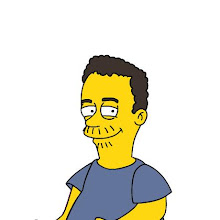Part of SitNGo endgame strategy is adjusting your own odds. Say you're the big stack and you're bullying the shortstack, who is the big blind when you're the button. Knowing his stack size is very important.
The rule of thumb in SNGs is that if someone is offering you 2-1 odds or better - you need a good reason to not call. Otherwise, you're throwing money away. 2-1 odds means that you need a 33% chance or better to win the hand for the call to be correct. Well, 2-3 offsuit wins about 33% of the time vs. AKs. Actually, any two unpaired cards are at least 33% to win vs. any other two unpaired cards.
So say the big blind has 1000 chips left after posting. The blinds are 50-100. If you raise to 300 and he shoves his 1000 chips in, you have to call 700 to win 1450, and your odds are over 2-1. If you raise to 250, however, and he shoves his 1000 in, now you have to call 750 to win 1400, and your odds go down to 1.87-1. This still might justify a call depending on your cards and his possible holdings, but you've crossed below that magical 2-1 threshold.
I am learning that you need to think about this stuff before you raise. Suppose you're the big stack and you get dealt 9-3o and you're thinking about raising to keep beating up on the blinds. Let's say both the big and the small have 1000 chips left, and you don't want to call either of them with 9-3o, whether the pot odds say to or not. There are a couple things you can do - one is reduce the raise size to 250, which then manipulates the odds down to below 2-1 so you don't "force" yourself to call with garbage. The second thing you can do, of course, is fold.
Each of these actions can serve purposes for metagame reasons. The first time you reduce your raise size from 300 to 250, a player who is paying attention might think "woah, he just reduced his raise size - I wonder if that means he has a monster and wants action?". Folding for a lap or two can put it into the villain's heads that you're not just raising with any two cards - that you actually have some criteria for raising (which is true, even if that criteria is very wide).
Saturday night I had a very complex hand where I had to take all of this stuff into account. I was the button and the big stack. I had been very aggressive raising and my opponents were not showing too much resistance to this point.
The small blind was a beginning player who was cold-calling raises at a high frequency, and usually showing down broadway cards or aces with bad kickers.
The big blind was a winning player with over 2000 tournaments under his belt. He knew what he was doing.
We were at the 150/300 blind level and I found myself with KQo - a very good hand when 3 handed. I knew I was going to raise- the question was whether to raise to 900, or just 750.
Arguments for making it 900 -
KQ is a strong hand.
The small blind is cold-calling with lots of hands that I dominate. (put money in with the best hand)
If the big blind shoves, KQ should be good enough to justify a call with 2-1 odds.
I had been very aggressive, meaning that my opponents might be willing to take a stand with a much wider range, thinking there's a good chance would fold many garbage hands.
Arguments for making it 750 -
I could fold if something odd happens and not worry too much about odds. (say the small blind minraises and then the big blind shoves over. My odds would be even better than 2-1, but the heavy action looks like we're going to have the two shortstacks going at it right now - and in a SNG, I gain equity by folding).
Varying my raise sizes can keep opponents guessing.
In the end, I went with a 900 raise. The small blind folded but the big blind shoved over. After making sure I was indeed being offered 2-1 odds (it was actually 1.92-1, but I couldn't be this precise in live action), I made the call. He had AJ and won the pot when neither of us hit a pair.
Was this a good play? Well, if I know that I up against precisely AJo, I am about 37% to win with KQo - big enough from a pot odds standpoint. Moreover, however, Pokerstove tells me that I am the almost the same percentage to win vs. the entire top 8% of hands with KQo - and 8% is probably too narrow a range to assign to a good player who is reraising all-in and still has some (but not much) fold equity. When you also take into account the cold-calling tendencies of the small blind - I feel that this is a fine play, regardless of the result.
11 months ago

No comments:
Post a Comment